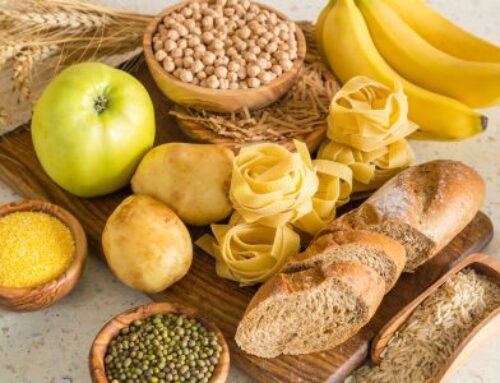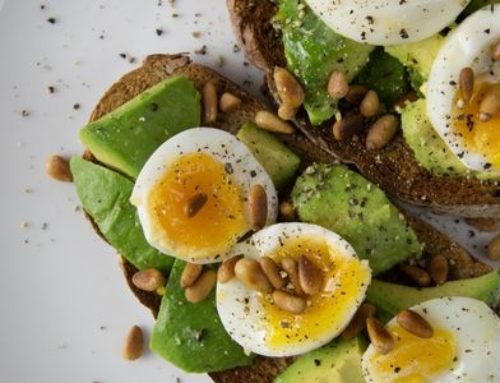
In part 1 of this article, I highlighted the importance of viewing exercise and moving your body as part of your regular daily routine for managing diabetes rather than solely for “losing weight”. In part 2 we’ll be looking at the food habits and eating patterns that could help you get on top of Type 2 Diabetes, and why it needs to be more than just weight-loss focussed.
Weight Does NOT Equal Health
Weight and health are two are very different things despite constantly being lumped together in the same bucket. You can be skinny with a normal BMI yet still suffer from diabetes, a heart attack or a stroke. Likewise, you can have a larger body with an overweight BMI yet still have perfectly good health and well-controlled diabetes. Weight alone is not the sole factor when it comes to lifestyle diseases like Type 2 Diabetes.
This confusion between weight and health may have driven you to rapid weight-loss diets which often promote an eating pattern that is anything but healthy. These eating patterns often instruct you to stop eating nutritious fibre-rich foods that are essential for good health such as fresh fruit, vegetables, legumes, lentils and wholegrains. These eating patterns may also promote insulin resistance which could actually worsen the progression of Type 2 Diabetes (meaning you end up on insulin injections sooner). These eating patterns can lead to poor mental health via severe restriction of food or prolonged periods of fasting. Consider the fact that people with diabetes are already twice as likely to suffer from depression compared to the rest of the population.
On the other hand, there are those of us who take the sensible approach with making healthy changes to the way we eat – only to give up after a while because the weight wasn’t coming down. The irony is that their intentions were good – they wanted to lose weight “for better health”, yet the very thing that stopped them from maintaining those healthy changes was weight itself. This is why we need to eat healthy because we want to be healthy, and not solely because we want to lose weight.
A Healthy Eating Pattern
The truth is that there is no singular recommended eating pattern for Type 2 diabetes. This means that many eating patterns can result in improvements in your blood sugar control – it just needs to be a pattern that you can do daily for the rest of your life, with a focus on key healthy eating principles. Rather than telling you to “stop eating this” and “cut that out”, I want to focus on eating patterns that encourage you to eat more food.
Here are some eating patterns that you can adopt for better health and control of your Type 2 Diabetes.
Eat more non-starchy vegetables. Eat them at every meal
Eating vegetables is a skill. As such, you’ll need to start with recognising what level you’re currently at and slowly level up to the point of veggie mastery. For example, if your current go-to lunch is a cheese and ham sandwich, you do not need to be swapping it for a giant bowl of salad. You could, however, add in some sliced tomato and cucumber, with a handful of lettuce. Veggie goal achieved!
Just do something simple that you can repeat daily regardless of whether you’re sitting down to a homemade meal or getting Domino’s delivered. Here are some ideas to get you started:
- Throw some green beans or brocollini into the pot when boiling pasta. Fish them out with tongs after 1-2 minutes to avoid them getting mushy (unless you like it that way! Serve them as a side to your pasta dish)
- Use a supermarket coleslaw to top up a takeaway meal e.g. burgers or a meat pie.
- Order meals that have some vegetables in them, or even an extra vegetable side-dish when eating out e.g. a garden salad, cooked seasonal vegetables, sautéed greens.
- Use convenient vegetables to top up a meal e.g. microwave SteamFresh packs of vegetables.
Even if you ate just a single cherry tomato instead of going without any vegetables, you’re winning!
Eat more wholegrains
Grain-based foods have been unfairly demonised, as there is strong evidence that a high intake of wholegrain foods reduces the risk of Type 2 Diabetes. Unfortunately, this demonisation is likely the result of the fact that the grain-based foods that feature in our modern diets are generally processed to within an inch of its life, rather than being eaten mostly whole. Here are some ideas on getting more wholegrain foods back on your plate:
- Choose grainy products – the more grains you can see, the better. The brand does not matter – if it’s grainy it will do.
- Multigrain bread, grainy bread rolls, multigrain wraps and tortillas.
- Grainy biscuits e.g. Ryvita, Vitaweat 9 grains
- Eat wholegrains such as quinoa, pearled barley, rolled oats.
- Rolled oats make a great breakfast, either cooked or raw like a muesli
- Quinoa can make a nice alternative to couscous
- Pearl barley is great in soups and used in place of rice – try using some in a “fried rice” dish or risotto.
Drink more water and calorie-free drinks.
Don’t wait until you feel thirsty before you seek a drink. Instead, try to be intentional about creating a routine for drinking fluid across the day. Water is your best choice – it is what nature has intended for us all. If you need a different drink every now and then, try to make sure it is a calorie-free drink that is not a sugar-sweetened choice.
Here are some great options:
- Water – straight from the tap or infused with flavour from fresh fruit (lime/lemon/berries)
- Sparkling water – plain or flavour-infused (check the nutrition panel for the Energy value – it should be close to zero)
- Tisanes without any added milk or sugar e.g. peppermint tea, chamomile tea, rooibos tea
Despite being calorie-free, these caffeinated drinks are not as hydrating as plain water so be mindful of your intake.
- Green tea or black tea without added milk or sugar
- Black coffee without added milk or sugar
- Diet soft drinks or “zero” soft drinks
Managing Type 2 Diabetes is often highly individualised, so if you’re still feeling confused about how to manage your blood sugar levels long term, get in touch with our team. We’ll help you feel confident in your food choices for long term good health.
Hear more from Melissa with her guest appearance on The Daily Dollop podcast:



